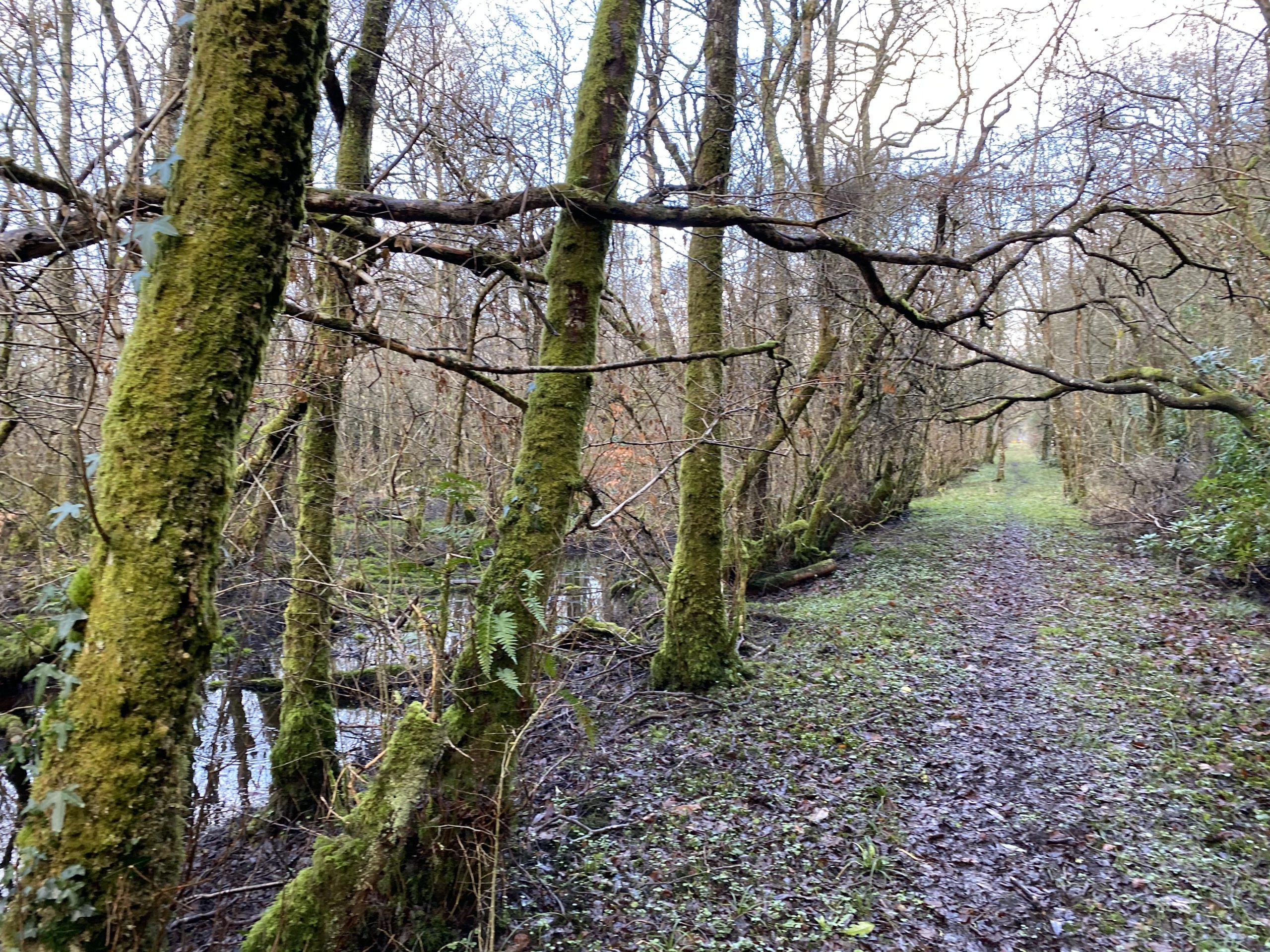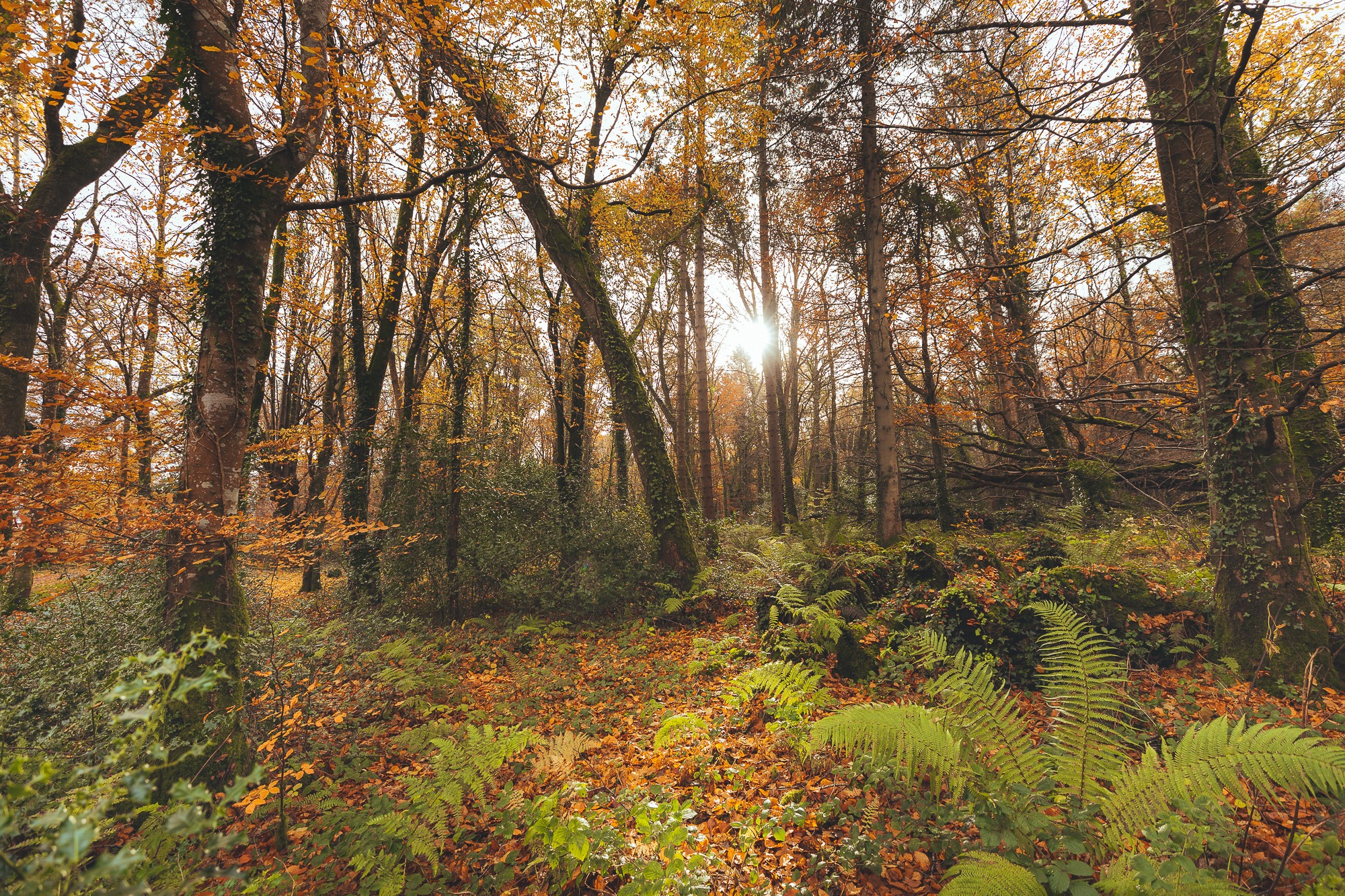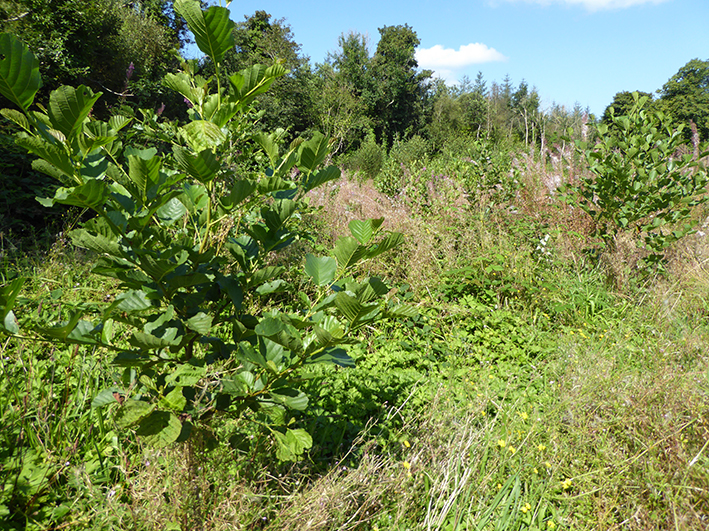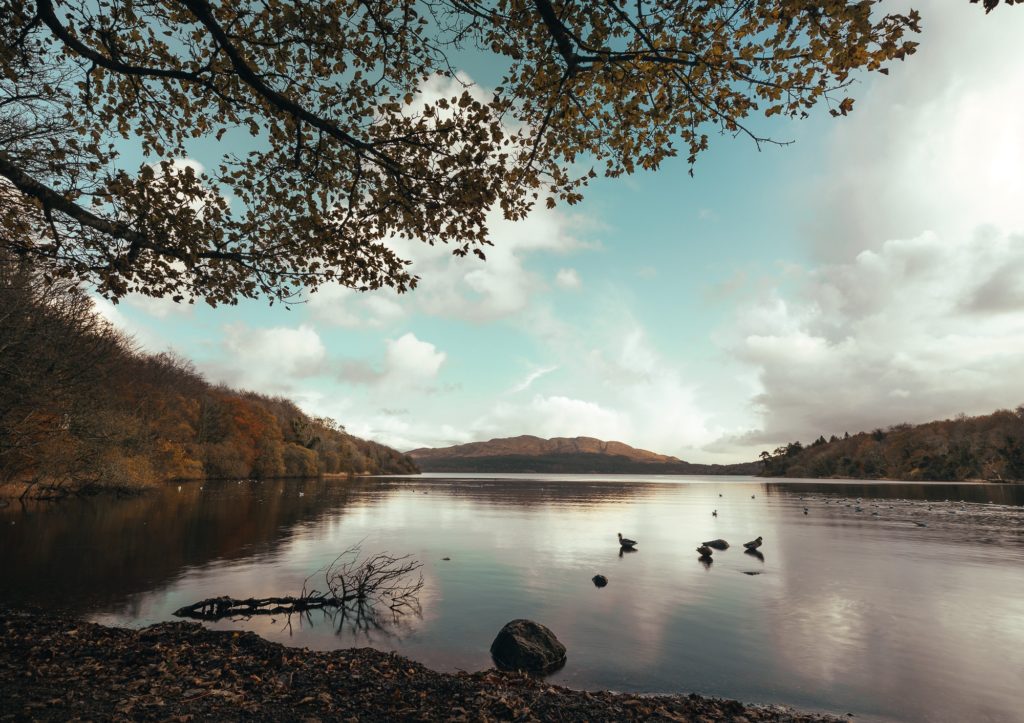RESTORING HAZELWOOD
Stay up to date! Subscribe to our newsletter
Hazelwood lies at the heart of Yeats Country on the shores of Lough Gill in County Sligo, overlooking the Lake Isle of Innisfree. A semi-natural treescape of 130 hectares, it features one of the finest alluvial woodlands in all of Ireland.
This EU-protected habitat is rich in water-loving native tree species like willow, alder and ash, and is periodically flooded by the Garavoge river. However, it is has been badly afflicted by the exotic shrub rhododendron, which casts dense shade on the understory and prevents young native trees, shrubs and ground flora from growing like they would in a healthy habitat.
At the National Biodiversity Conference in 2019, Coillte committed to investing €500,000 in the restoration of Hazelwood as one of the conference’s ‘Seeds for Nature’. This is funding the ‘Restoring Hazelwood’ project which has seen the removal of dense thickets of invasive species, enabling the natural regeneration of the alluvial habitat. Biodiversity of the wider woodland is being enhanced by thinning areas of existing woodland to encourage the natural regeneration of native species and to improve structural diversity. Furthermore, some areas of non-native conifers have been replaced with a native woodland mix following harvesting.
Biodiversity works have been underway since 2020, with Coillte liaising closely with the National Parks and Wildlife Service as this special site is protected under national and international conservation legislation. The majority of the conservation work is expected to be completed by 2024.
| Project Details | |
|
What? |
Alluvial woodland, mixed broadleaf woodland & new native woodland |
| Where? |
Co. Sligo, on the shores of Lough Gill |
| Status? |
Annex 1 Habitat, Special Area of Conservation. |
| How? |
Improve species diversity, improve structural diversity, and create new habitat. |
| Where? |
2020 – 2024 |
| Why? |
To protect rare habitat and enhance biodiversity |
WHAT WE’RE DOING
There are three main types of woodland habitat in and around Hazelwood:
1. Alluvial woodland
This wet woodland, located opposite the entrance to Hazelwood and beside the Garvoge river, is one of the rarest types of woodland in Ireland and as such it is an extremely important area for biodiversity, providing a home for many specialist water-loving plants and wildlife. These habitats are also under increasing threat in Europe, which is why this area is classified Annex 1 Priority Habitat under the EU Habitats Directive. In the late 2000s, a lot of work was done under an EU LIFE Project to remove invasive species from a portion of the alluvial woods, but there is still a large area where the trees are choked and the understory is under permanent shade, which prevents the woodland from renewing itself.
Coillte Nature has been undertaking a major project to remove invasive rhododendron, laurel and dogwood species from 30 hectares of the alluvial woodlands, close to the area already cleared under the earlier EU LIFE Project. This will improve the biodiversity of the site by providing space and light for lots of different species of ground flora to grow and allow the woodland to regenerate naturally. We will also improve the habitat by felling some non-native conifers (Norway spruce, western hemlock) and non-native broadleaves (beech, horse chestnut and sycamore) that have spread into the area.


2. Mixed broadleaf woodland
This is the amenity woodland area with tracks and trails that you can access from the main car park. It features a mixture of native and non-native broadleaf and conifer species, many of which are of a similar age and planted close together. This means that there are few young trees coming up in the understory, making the forest vulnerable in the medium- to long-term.
Coillte Nature will carefully select and remove a small number of mature non-native trees in order to allow more light to fall on the forest floor, using a Continuous Cover Forestry (CCF) approach. In some cases, native trees will grow naturally in the gaps. Where they don’t, we’ll plant them and protect them from animals (like deer) that might eat them. This will make the forest multi-generational, improve its structural diversity and enhance its resilience to climate change.
3. Commercial plantations
Coillte manages a small 4.3 hectare area of commercial forestry in an area beside the alluvial woodland. The area was clearfelled in 2018 and was due to be replanted with Sitka spruce. However, as it is relatively small and adjoins a large area of high-quality alluvial woodland, we decided to manage the clearfell within the context of the overall conservation management strategy for Hazelwood.
Coillte Nature replanted this area in 2020 with native woodlands with a species mix that mimics the adjacent alluvial woodland community. It comprises alder, grey willow, downy birch, Scots pine, holly, hazel and guelder rose.

CONSERVATION STATUS
A large portion of Hazelwood is designated as Annex 1 Alluvial Priority habitat under the EU Habitats Directive. Priority habitats are restricted in distribution across the EU and therefore are at most risk of disappearing. For this reason, their conservation value is extremely high.
Hazelwood is also classified as former 'old woodland' and this is confirmed by the presence of broadleaved woodland on the 1830 Ordnance Survey map. It represents a significant proportion of the national total of alluvial woodland habitat type.
The native tree species of the site are dominated by willows (Salix spp.) and alder (Alnus glutinosa), along with ash (Fraxinus excelsior), birch (Betula pubescens) and whitethorn (Crateagus monogyna), which together form a dense carr. On drier ground there are some large mature oak (Quercus spp.), beech (Fagus sylvatica), lime (Tilia spp.), poplar (Populus spp.), horse chestnut (Aesculus hippocastanum), holly (Ilex aquifolium) and yew (Taxus baccata).
The ground flora is typical of wet woodlands, and includes reeds (Phragmites australis), marsh marigold (Caltha palustris), flag Iris (Iris pseudacorus), meadowsweet (Filpendula ulmaria), marsh bedstraw (Galium palustre), bent grass (Agrostis spp.), purple loosestrife (Lythrum salicaria), skullcap (Scutellaria galericulata), marsh cinquefoil (Potentilla palustris), wood dock (Rumex sylvatica), common valerian (Valeriana officinalis), marsh ragwort (Senecio aquaticus), gipsywort (Lycopus europaeus), bramble (Rubus fruticosus agg.), wood avens (Geum urbanum), hedge woundwort (Stachys sylvatica), nettles (Urtica dioica), ivy (Hedera helix), horsetails (Equisetum spp.) and willowherbs (Epilobium spp.). These wet alluvial woodlands habitats also provide important refuge to amphibians, and other water-loving species like otters (Lutra lutra). Red squirrels also live here.

Dublin Mountains Makeover
When the first of Coillte’s Dublin Mountains forests were planted between the 1940 and 1960s, the city was a distant concern, both geographically and in...
Wild Western Peatlands
The Wild Western Peatlands project will see Coillte Nature restore and rehabilitate approximately 2,100 hectares of Atlantic blanket bog that is currently planted with commercial...
Midlands Native Woodland
The raised bogs of the Midlands are some of Ireland’s most important habitats. Formed over millennia by plants decomposing without oxygen, healthy raised bogs provide...